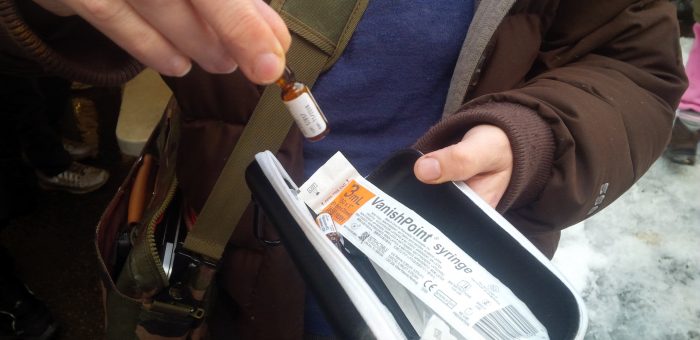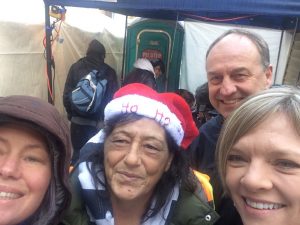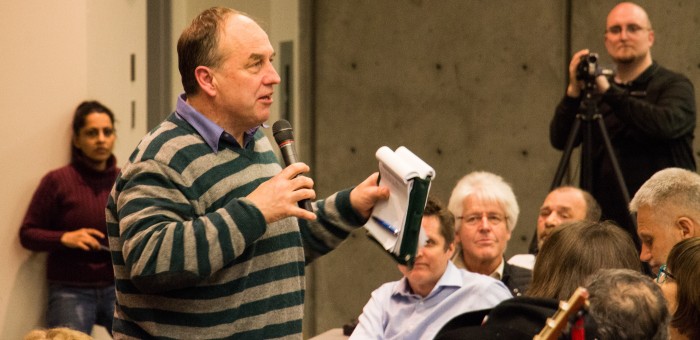Over the next few weeks I will explore the concept of “Basic Income”. I would be most grateful if you would share your comments, suggestions and concerns with me about this topic as we unpack what it all means in a series of upcoming posts. In this first post we simply provide a backgrounder.
1. What is “Basic Income”?
A basic income is a regular payment that the Government makes to individuals or families in its jurisdiction, which is not contingent on recipients fulfilling specific criteria (e.g. proving that they are active job seekers).
Basic income comes in two basic forms: means-tested and universal. In its means-tested form, a basic income is paid only to those whose income from other sources falls below a predetermined threshold, but is not contingent on recipients’ willingness to work. It is often referred to as “guaranteed minimum income”. In its universal form, a basic income is paid to all, irrespective of income from other sources. The unconditional basic income is often referred to as “universal basic income” or a “citizen’s’ wage”.
The idea of a basic income has become more popular recently, and has garnered support from across the political spectrum. In Canada, Ontario is planning a pilot next year, and Quebec, Alberta, and PEI have also raised the possibility of running pilots in the near future. Internationally, Finland and the Netherlands are both staging large-scale pilots in 2017.
2. Background
a. Poverty and Inequality in BC
The levels of poverty and inequality in BC are high relative to the national average. BC has higher than average rates of poverty, with poverty rates up to 16% and child poverty rates up to 20%, depending on the poverty measure used. BC also has one of the highest levels of inequality in Canada, estimated to be second only to Alberta.
For those needing support, our current system of social programs has a number of shortcomings. The siloed approach, with a myriad of different programs with specific eligibility criteria, allows people to slip through the cracks in the system and leaves many unsure which benefits they are eligible for. It also has a substantial administrative cost. There is significant stigma in collecting welfare today, and many argue that the invasiveness of the current approach, with its stringent conditionality and reporting requirements, strips recipients of privacy and dignity. Additionally, the current system may provide a disincentive for many to join the workforce, due to how quickly the benefits are reduced as any income is earned.
b. A Shifting Economy
Unprecedented technological advance, of rapidly increasing pace, is set to have a significantly disruptive effect on our economy. To now, we have seen deindustrialization and the closure of industries, together with a boom and bust economy in British Columbia that almost defines much of provincial economic history. With increasing automation, forecasts suggest the potential for the rapid elimination of jobs across a wide range of sectors. Automated voice recognition software is already replacing many call centre workers, car assembly plants use more robots than people, and driverless cars and trucks are already significantly impacting the taxi and trucking industries. The effects of automation are predicted to be most strongly felt in moderate and low-paying jobs: Barack Obama’s 2016 economic report predicted that jobs paying less than USD$20/hour face an 83% likelihood of being automated, while jobs paying between $20 and $40/hour face a 33% chance. In the UK, one third of retail jobs are forecasted to be replaced by 2025. The effects of automation are predicted to spread to higher paying professional sectors as well, particularly the medical and legal professions. Technological advance has been attributed as a cause of increasing inequality by a number of economists because of automation’s effects on jobs and technology’s role in further concentrating the accumulation of wealth in the hands of top earners.
We are also heading toward what is commonly termed the ‘gig’ economy. We are shifting away from the 20th century model of permanent full-time work with benefits toward precarious contract-based work, which is spreading at an increasing rate to workers at all levels of education, trade, skill and profession. Contract-based employment means employers, with an expanding labour pool, can negotiate pay, usually with few or no benefits, outside of union negotiated packages. Examples today include Uber drivers, health care assistants, and sessional lecturers at postsecondary institutions.
3. Potential Effects of a Basic Income: Opportunities and Challenges
Perhaps the most transformational promise of a basic income is its potential to raise recipients out of poverty. Living in poverty takes a significant toll, and the elevated levels of stress that it brings are associated with higher levels of alcohol and drug abuse, domestic abuse, and mental health problems. Those living in poverty are more likely to have inadequate nutrition, use tobacco, be overweight or obese, and be physically inactive. The adverse effects of growing up in poverty on a child’s ability to be successful in school and integrate into the workforce contribute to generational poverty.
The moral case for tackling poverty is self-evident: doing so would have a life-changing effect on the lives of those currently living in poverty and dealing with the problems it brings on a daily basis. The financial cost is also significant: the adverse outcomes of poverty lead to increased use of public health care, more hospitalizations, and lost economic activity, among other effects.
A pilot project undertaken in Manitoba in the 1970s suggests that a basic income policy can have significant impacts on the healthcare system: providing a basic income to residents of Dauphin, Manitoba for 3 years reduced hospital visits by 8.5%. The decrease in hospital visits was attributed to lower levels of stress in low income families, which resulted in lower rates of alcohol and drug use, lower levels of domestic abuse, fewer car accidents, and lower levels of hospitalization for mental health issues.
A basic income could also provide a means to respond proactively to the changes we are just beginning to see in the labour market. As the effects of automation are realized, providing a basic income would enable those affected to retrain for new professions, attend or return to University or College, take entrepreneurial risks, contribute to their communities or other causes through volunteering and civic engagement, and invest time in their families.
A challenge in considering a basic income scheme is predicting its effects on the labour market, specifically the extent to which it might provide a disincentive to work comparable to or stronger than the disincentive often associated with our current social assistance programs. The Dauphin, Manitoba pilot study provides some initial information on this question: it was found that the negative effect on people’s willingness to work was minimal for the general population, but more pronounced for mothers with young children, and teenagers aged 16-18 who completed high school instead of leaving to join the workforce.
A recent report by the Vancouver Foundation advocates paying all youth ages 18-24 transitioning out of foster care a “basic support fund” of between $15,000-$20,000. Doing so, they estimate, would cost $57 million per year, whereas the cost of the status quo is between $222-$268 million per year, due to the range of adverse outcomes that affect youth in transition, including intergenerational poverty, criminal activity, substance abuse, lost educational opportunities, and homelessness. Thus they estimate that establishing a basic support fund for youth in transition would result in savings to the Provincial Government of $165-$201 million per year.
The cost of a basic income program is difficult to predict, and estimates range widely according to assumptions made about the characteristics of the program and its social and economic effects. In costing a basic income it is important not to ignore the cost of the status quo: the direct costs of unemployment, poverty, and homelessness as well as the costs of managing the adverse effects. Nonetheless, the cost of a basic income program to BC is potentially significant, and costs associated with different implementation options must be fully worked out and tested.
4. So what are your thoughts?
While I recognize that I’ve only provided cursory information to initiate this conversation, I would like to hear your thoughts on the idea of a basic income. Do you think a basic income policy holds promise as a potential way forward in BC, allowing us to tackle poverty effectively and prepare for a future in which the nature of work is vastly different from what we have known in the past? What are your concerns about the policy? How would you like to see it implemented? Thank you in advance for your comments.








